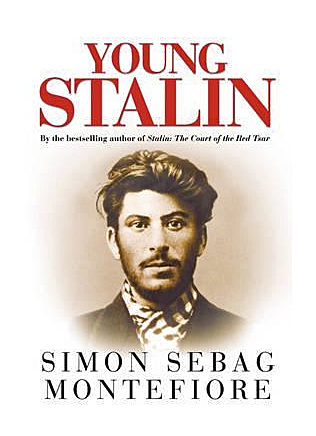
- Articles
Young Stalin — from Georgia Bandit to Red Tsar!
Young Stalin by Simon Montefiore is a well-researched, well-written, absorbing, and authoritative biography of Joseph Stalin’s early years. Following the usual formalities, the book begins with a tantalizing “Prologue,” the audacious robbery and bloody bombing at the festive Yerevan Square in the center of the town of Tiflis (now Tbilisi, the capital of Georgia). The heist, carried out on June 13, 1907 by a 29-year-old “Soso” (Stalin’s nickname) and his band of Georgian gangsters, was orchestrated to help finance Lenin’s revolution.
The terrorists made off with a huge, incredible sum of money, approximately 300,000 rubles or over $34 million U.S. dollars, with a buying power at the time an order of magnitude greater. Dozens of people, including Tsarist Cossack guards and innocent bystanders, were killed or wounded during the attack. The red terrorists detonated a number of powerful bombs that shook the center of the town. Nevertheless, it was a perfect crime; no one talked (even then Stalin ran a tight ship with hermetically sealed security) and no one got arrested.
Most of the money was funneled clandestinely to Lenin, who had authorized the young Stalin to carry out the sanguinary deed. But the blood money brought financial bickering among the revolutionaries. Moreover, the bloody carnage marred the image of the more radical faction of the Russian Social Democrats, led by Stalin in Georgia and by the supreme leader, “the eagle of the mountain,” Lenin throughout Russia. By 1912, the Social Democratic Workers Party (SDP) had become irrevocably split between the factions of Lenin’s Bolsheviks (the purported “majority”) and the more moderate Mensheviks, followers of Jewish revolutionist Yuli Martov and the father of the SDP, Georgi Plekhanov.
Generally, the Bolsheviks wanted a small, tightly controlled, conspiratorial intellectual group to rule in the name and place of the workers in order to establish a “dictatorship of the proletariat.” For the Bolsheviks, the end always justified the means, and violence, assassinations and bank robberies were necessary; suspected traitors were promptly annihilated to “protect” the revolution. Young Stalin became an “immediate” Bolshevik. On the other hand, the Mensheviks tended to be somewhat more democratic, prepared to allow both workers and peasants to participate in the ruling oligarchy. The Mensheviks were also less violent and generally condemned terrorism, murder, and bank robberies. So a split between the two rival factions was bound to occur. Soso and his band of bandits, who were terrorizing Georgia, accelerated the split and helped to make it irrevocable. Decades later and once firmly in power, Stalin would hunt down and literally exterminate the remaining members of the Menshevik Party.
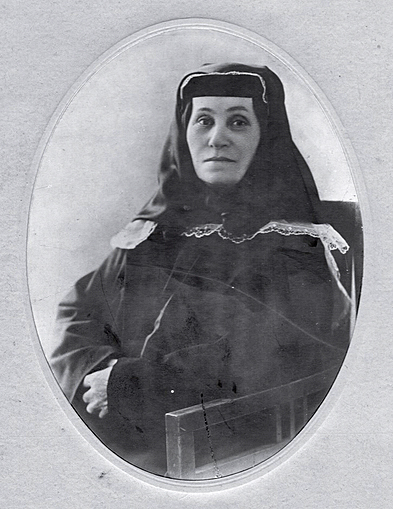
The book cemented my knowledge of Stalin. Indeed, he had a “saintly” mother, who sacrificed everything in order to educate her poor but gifted son in a seminary to try to convert him into a bishop of the Orthodox Church. And Stalin did have a drunkard for a father, a cobbler, who frequently beat both him and his mother. But there is a lot more that we learn from Montefiore that is not commonly known or written in previous biographies of Stalin, especially during his early years before he became the Red Tsar.
Montefiore also explains the evolving attitude and psychological profile of the studious child, the rebellious youth that grows up to be a ruthless, sanguinary, unforgiving young adult with an imperturbable and treacherous disposition. In rapid strides the child becomes a man, a man who becomes a monster, a monster who reigns as communist dictator of the vast Russian Empire (1924-1953) over which the ineffectual Romanov Tsar, Nicholas II, was deposed in February 1917.
Montefiore used archival material which had lain forgotten in dusty storage for years, interviewed eyewitnesses or their descendants, and perhaps most importantly, he uncovered and published material from a number of previously unpublished memoirs (for the first time made available for his book). This includes material from Stalin’s girlfriends, terrorist comrades and revolutionary rivals, who knew him well; many of them later turned against him and perished.
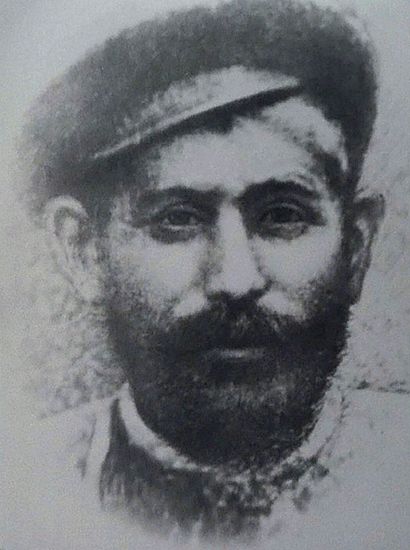
We learn the story of the three powerful men who protected Soso and his mother “Keke” from the drunken, abusive father, “Beso” Djugashvili, as the young Stalin grows up. All three at various times were suspected of being Stalin’s real father. Stalin would not have survived childhood without them.
Lazar Kaganovich, a Bolshevik and a Stalin stalwart, once said there were several versions of Stalin’s persona. Indeed, we learn about the young Stalin’s various developing personalities: the hard working and gifted student; the talented Georgian poet; the seminary choirboy and later tenor singer; the “consummate actor”; the revolutionary bandit and terrorist enforcer. It is easy to follow the progression then to Bolshevik leader to communist tyrant, and ultimately to totalitarian monster.
We are reassured about what we had learned previously from various authors, including exiled, literary figures such as Fyodor Dostoevsky and later Alexandr Solzhenitsyn, about the Tsarist prison system where many of these revolutionary figures spent considerable time prior to the October Revolution of 1917. (1)
In a footnote on page 92, Montefiore annotates: “Between 1881 and 1904, only 11,879 were sentenced [by administrative-military law], while during Stalin’s reign of the same approximate timespan, he presided over the deportation of an astonishing 28 million, several million of whom never returned.” Actually the figure is closer to 10% never returning. The tsarist prison-exile penal system was very lenient, particularly for well-placed revolutionaries like Lenin. Even Montefiore — who writes at times with subtle admiration for the idealist, young revolutionaries and almost always with clear distaste for the old tsarist regime — is forced to admit:
“Siberian exile was regarded as one of the most terrible abuses of the Tsarist tyranny. It was certainly boring and depressing, but once settled in some god-forsaken village, the exiles, intellectuals who were frequently hereditary noblemen, were usually well treated. Such paternalistic sojourns more resembled dull reading holidays than the living hell of Stalin’s murderous gulags.”

In support of Alexander Ostrovsky, who denied the much disputed assertion that Stalin had been a part-time agent of the Tsar’s secret police, the Okhrana, in pre-revolutionary days, Montefiore agrees that it would have been easy for Stalin to obtain the money for the false papers he needed to escape (at various times) because escape was not difficult from the lenient Tsarist exile: “Between 1906 and 1909, over 18,000 obscure exiles out of a total of 32,000 raised the 100 roubles needed ‘to buy their boots’ — the false papers needed to escape.”
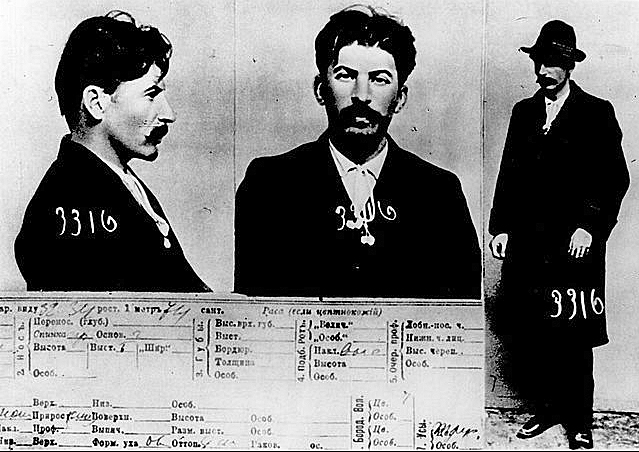
Even in exile Stalin preferred to associate with the criminal elements rather than with his political intellectual confreres. And from these associations, he learned valuable lessons that he would continue to apply criminally and politically after he became dictator — e.g., to manipulate the criminal elements to do his bidding, as informants, enforcers, and later as dreaded members of his security apparatus.
The similarities in the upbringing and modus operandi of Joseph Stalin and Fidel Castro in their youth are so striking that I cannot pass up the opportunity to point them out. Although these two men came from different socioeconomic backgrounds, as youngsters both thought they were special, different from and better than other children, despite the fact they grew up in the shadow and stigma of possible illegitimacy. Both children went to religious schools, where they excelled and strove to be the best at everything, but they were also bullies and had to be the leaders. As they became older, these men became more ruthless and unforgiving, and did not hesitate to eliminate opponents; they were troublemakers and trouble followed them wherever they went (i.e., Stalin in Batumi and burning Baku, and Castro in Havana student days and in Colombia’s “Bogotazo,” for example). (2)
Both men became criminal gangsters and both carried guns (Stalin was a “Mauserist,” Castro, a “pistolero”), but they learned to delegate the dirty work of killing to others (enforcers). They were master conspirators, who controlled the underground (Stalin was the supreme instigator of konspiratsia); and both were actors and orators (at these, Castro was the better of the two). Both men came to believe that because of their sense of revolutionary mission and leadership, they were owed everything that their comrades and anyone who came in contact with them could provide (i.e., shelter, food, money and women). When in prison, both Stalin and Castro were treated very leniently, at times almost like celebrities, and so frequently they made successful demands upon their jailers (i.e., use of books, permission to teach their militant catechism to their fellow prisoners, etc.), which would be unthinkable for prisoners of communist regimes.
Both Stalin and Fidel Castro used women as lovers and were frequently supported by them, but these women comrades were discarded when they were of no further use to the two leaders. Both men vehemently condemned the “crimes” of their predecessors (i.e., Tsar Nicolas II and Fulgencio Batista), only to vastly surpass them in cruelty and barbarity when they attained power. And once Stalin and Castro reached supreme power, they knew how to wield it and hold onto it, so that even their own inner circle and security apparatus feared them. Yet, both men could be pragmatic when they had to be (i.e., Stalin opening churches during World War II to inspire patriotism and closing temporarily the Comintern to charm the allies, etc., and Castro allowing tourism and travel to the island for needed hard cash and supporting the Soviets during the crushing of the Prague Spring in 1968, etc.). Both men reinterpreted Marxism-Leninism to serve their own needs in wielding absolute power and to feed their cults of personality. In short, one cannot avoid drawing the conclusion that the two men differ only in quantity, not in kind.
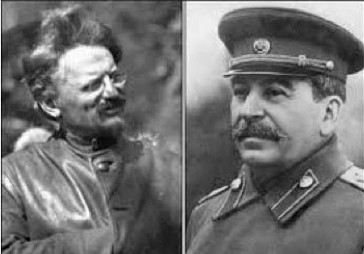
I would also be remiss if I did not state that I agree with Montefiore in one of his underlying themes, that Stalin played a much larger role in the Russian revolution than we have heretofore been led to believe by some historians and documentary filmmakers. After Leon Trotsky’s judgment of Stalin as “an outstanding mediocrity of our Party” (a fatal error on his part) and his insistence that Stalin’s role in the revolutionary struggle was minimal — many historians took note. Trotsky, for example, wrote that Stalin spent the Revolution of 1905 (what Trotsky famously called the “dress rehearsal”) “in an unpretentious office writing dull comments on brilliant events.” Historians then have followed the historical line of Trotsky who was a prolific writer and lived in Mexico until his assassination at Stalin’s direct order in 1940.
And then in 1956 Nikita Khrushchev began to dismantle Stalin’s cult of personality and re-write the story of the Russian Revolution that had been revised by Stalin and Beria to give Stalin the central role next to Lenin. In the process, the true role that Stalin played in Georgia, and subsequently Russia, was ignored and forgotten. This book brings that forgotten history to the fore, readjusting the chronicles to give Stalin his proper role up to the Revolution of 1917. Suffice to say, Stalin did have a major and bloody role to play, as a Georgian bandit, conspiratorial enforcer, ruthless terrorist, efficient organizer, even orator, and Bolshevik, While Lenin tarried in Zurich, at times bickering with the other exiles or with the German Social Democrats and at other times disconsolate, doubting that Revolution would ever come to Russia (3) – Stalin was active, robbing banks, eliminating enemies, yet imperturbable, even in prison or exile in Siberia, certain that “blood would run in torrents” and that the Bolsheviks would topple the Tsar and gain power.
This is a well-organized tome of over 400 pages and includes Stalin’s family tree, maps, quaint and rare illustrations and photographs, list of characters, etc. The text, the source notes, selected bibliography and index are 397 pages. The author’s research is exemplary. This is a fascinating book for those interested in Stalin and Soviet history, as well as political science, terrorism, revolutions, the psychology and incarnation of evil, and ultimately the ascent to power of arguably the worst tyrant and the greatest mass murderer in history. The book adds significantly to those areas and becomes absolutely the authoritative biography of Stalin in his early years. Nevertheless, I am still not convinced that Stalin did not at times cooperate with the Okhrana as a double agent. (4)
A mild and final warning is appropriate. Although the author has carried out superb scholarship and has been very diligent in condemning Stalin’s crimes, I must warn the readers that Montefiore does evince an almost subliminal but definite admiration for Stalin the revolutionary that may be disconcerting for some of us who have experienced the evils of communism first hand. Indeed, Montefiore in his Acknowledgments humorously writes that his wife has found the “blood soaked presence of Stalin in our marriage a trial of endurance,” but now “we finally enter our own period of deStalinization” after publication of the work. I expect his deStalinization to be complete, and I congratulate him on this great tour de force.
Citations and Recommended Reading
1) The Gulag Archipelago, Parts I-II (1918-1956) — An Experiment in Literary Investigation (1973) and The Gulag Archipelago, Parts III-IV. (1918-1956) — The Destructive Labor Camps and The Soul and Barbed Wire, (1975) by Alexandr Solzhenitsyn.
2) Fidel Castro by Robert E. Quirk. 1993. This is the most comprehensive biography of the Communist dictator to date; yet it is quite readable. Quirk’s scholarship is superlative. No other book about the life and times of Fidel Castro comes close to matching Quirk’s objective magnum opus.
3) November 1916: The Red Wheel II by Alexandr Solzhenitsyn (1999). This volume includes Solzhenitsyn’s famous psychology-historical “Lenin in Zurich” essay.
4) “The Astounding Case of Soviet Defection Deception” by Miguel A. Faria Jr. This 2003 essay discusses, among other fascinating items, an alternative theory of Stalin as possible Okhrana agent.
Written by Dr. Miguel Faria
Miguel A. Faria Jr., M.D. is the author of Cuba in Revolution: Escape from a Lost Paradise (2002) and the essays, “Stalin’s Mysterious Death” (2011) and “Stalin, Communists and Fatal Statistics (2011).
This article may be cited as: Faria MA. Young Stalin — from Georgia Bandit to Red Tsar! HaciendaPublishing.com, November 23, 2012. Available from: https://haciendapublishing.com/young-stalin–from-georgia-bandit-to-red-tsar/.
A shorter version of this article appears in Amazon book reviews. These photographs and illustrations do not appear in the Amazon article, nor necessarily in the book..
Copyright ©2012 Miguel A. Faria, Jr., M.D.
1 thought on “Young Stalin — from Georgia Bandit to Red Tsar!”
A recent post in my FB page tied Stalin’s seminary training to left-wing Jesuit conspiracy in the Trump’s Mar-a-Lago raid! For the life of me, I don’t see the connection. Attorney General Merrick Garland, who ordered and has taken responsibility for the raid is Jewish. Christopher A. Wray is said to be a member of the Jesuit Order, but much more ominously he was a graduate of Yale University and was a member of the elitist Skull and Bones organization!
With that said, what does the Jesuits have to do with Stalin? To begin with, Stalin trained in a Russian Orthodox Church (ROC) seminary, which has nothing to do with Jesuits. In fact, the Eastern Churches have very little to do with and historically hate the popes and the Catholic Church. Constantinople, and what was left of the Byzantine Empire, succumbed to Islam in 1453 because of the stupid and blind hatred of the Catholic Church by the various Patriarchs of Constantinople and the hierarchy of the Orthodox Church. They preferred the Ottoman Turk conquest and yoke rather than conversion.
The Jesuits reformed the Catholic Church after the Reformation, again having nothing to do with Stalin or the ROC! The greatest and most patriotic CIA Director in the last 40 years was William Casey, a Patriot, Director of the CIA under Reagan. Along with Margaret Thatcher, Alexandr Solzhenitsyn, Pope John Paul II, and Reagan— Casey was one of the 4 Americans most responsible for the collapse of the USSR! You need to read his biography! Incidentally, I’m not Catholic but I’m aware, Catholicism is one of the greatest institutions in Western Civilization, if not the greatest! Here is the book you should read: Casey: The Lives and Secrets of William J. Casey, From the OSS to the CIA by Joseph E. Persico. 1990. This tome is an excellent biography of William J. Casey, President Ronald Reagan’s CIA Director (1981-1986) during one of the “hottest” periods of the Cold War. The life of Casey is a story against all odds, and to understand the story of this man who was so dedicated, the book must be read with the avidity it deserves. The son of Irish-Catholic immigrants, Casey was a man for all seasons, lawyer, author, capitalist, and director of secret intelligence during World War II (OSS), to “king-maker” in the Republican establishment, to finally Director of the CIA.